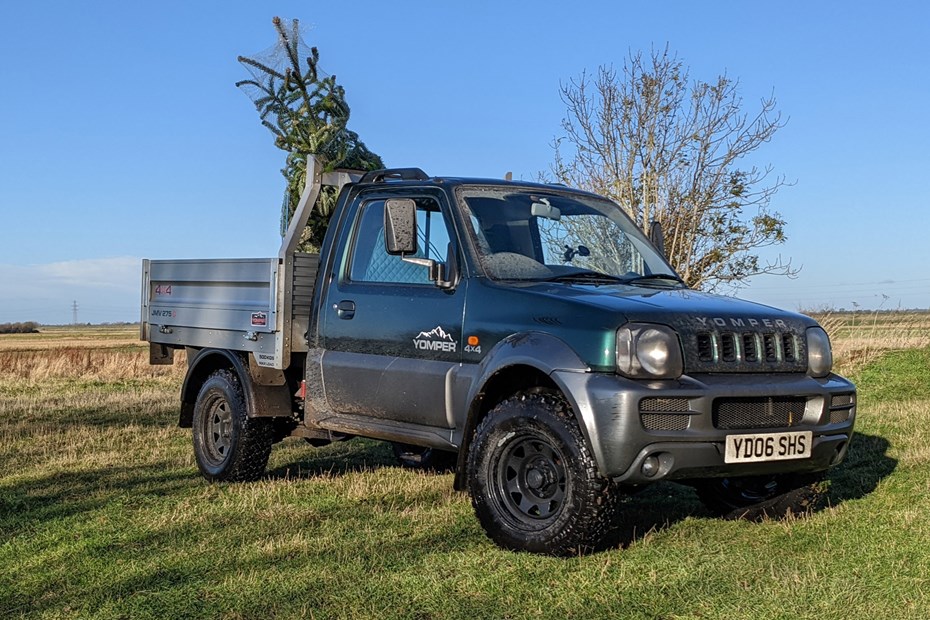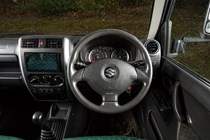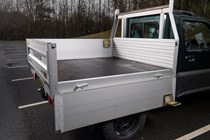Small pickup trucks aren’t really a thing any more – while you can buy some models like the Ford Ranger and Toyota Hilux as two-seat single-cab models, they’re still as wide and as long as their hefty crew-cab siblings.
And while small commercial vehicles do exist, very few are capable of going off-road – that’s a skill you’ll only find with commercial 4x4s such as the Suzuki Jimny Commercial, or some very niche panel vans such as the Vauxhall Combo 4x4.
That means there’s a gap in the market for a dinky but fiercely capable load-lugger – one that can fit through the tiniest gates and up the narrowest lanes, but can also traverse a boggy field like it was a tarmac car park. Enter the Yomper.
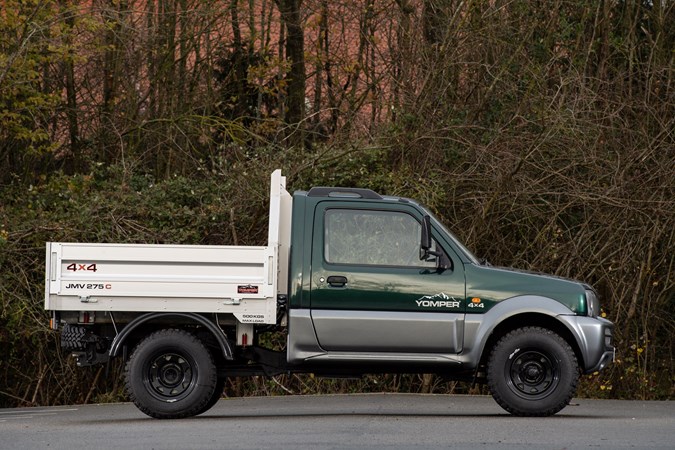
A small pickup truck based on the bones of a Suzuki Jimny, the Yomper 4x4 range is converted in Halifax, Yorkshire, and aims to fill that gap – being more useful, more roadworthy and more civilised than a UTV like a Polaris Ranger or Honda Pioneer, while simultaneously being smaller and more suited to rough work than a lifestyle-biased full-sized pickup truck.
Oh, and the name? A yomp is a military term meaning a long march with lots of heavy equipment. The more you know!
Yomper design and construction
The base of a Yomper is a Suzuki Jimny. The preferred vehicles are ‘Gen 3’ models, built between 2005 and 2017 – however, earlier vehicles may be considered. The key is that they’re in good condition, solid and relatively rust-free. Cosmetics aren’t so important, but the chassis needs to be in tip-top shape.
This means that for the most part Yomper sources its own vehicles, rather than customers having their own cars converted.
The donor vehicles are then stripped down to their bare chassis, whereupon an additional 50mm is welded into the centre, lengthening the wheelbase. The bodywork is cut down to size, with custom fibreglass panels added where they’re needed.
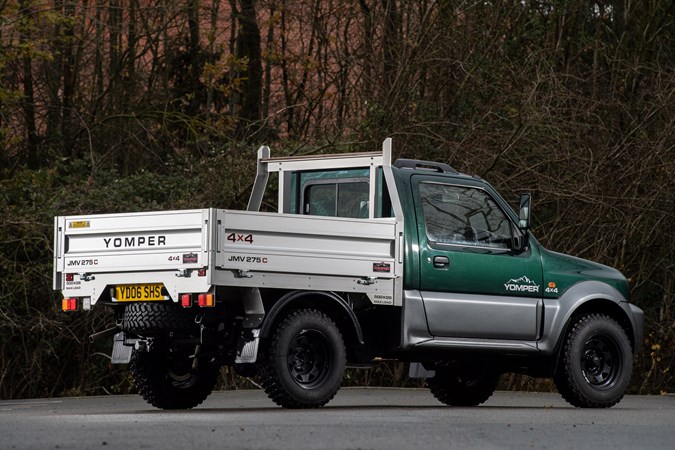
Yomper can in theory create just about any type of vehicle from this point. The JMV275 Commercial we’re testing is a dropside pickup with a sturdy aluminium load bed, but we also had a poke around the Bergan (named after a military backpack), which is based on the same extended chassis but has an integrated bed and a side-opening tailgate.
If your needs are less demanding you can do without the chassis extension and have a conversion on a standard-length Jimny, or if you want to add your own rear you can simply have a chassis cab. Yomper can even convert on the latest, 2018-on Jimny if you like, as the chassis mounting points are virtually identical.
Regardless of your needs, you’ll get a vehicle that’s been almost entirely rebuilt from the ground up, rustproofed and repaired where necessary, with the engines and interiors overhauled and typically the chassis and suspension upgraded. Our test vehicle had a 50mm lift kit and chunky off-road tyres.
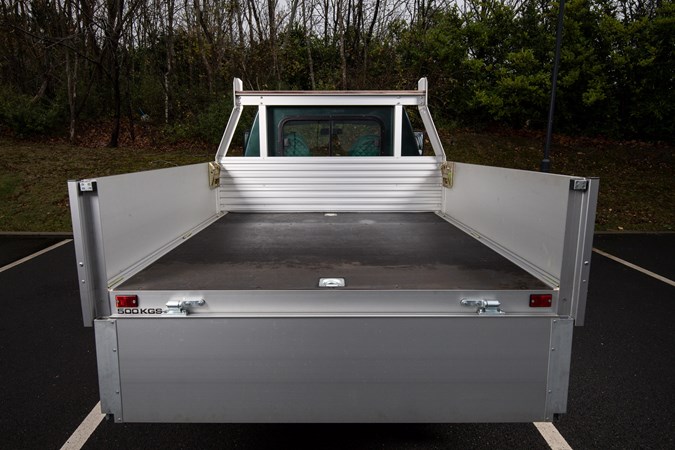
Items like the seat and seatbelt mountings are left alone, though the airbags are removed. This all helps Yomper get the vehicles IVA (Individual Vehicle Assessment) approved for full road-legal registration.
And the end result? Very impressive indeed. Yomper’s CEO Giles Walker wanted the end result to be ‘the kind of vehicle Suzuki would have built themselves’ and we reckon he’s nailed it. The Yomper conversion feels almost factory quality, and without the prominent branding you’d probably struggle to figure out where Suzuki’s work ends and Yomper’s begins.
How much can it carry?
The JMV275 Commercial that we tested is rated for 500kg in its load bed, which though undeniably smaller than on a full-sized pickup is still impressively large for such a small vehicle. It measures 1700mm long by 1690mm wide, with a depth of 385mm.

All three sides drop down very easily, and there are plenty of tie-down points as well as handy fold-down steps to climb up and down.
The Yomper’s also rated to tow up to 750kg.
What’s the Yomper like to drive?
It’s a vehicle that excels where it needs to – with the off-road additions our test model has plus the underlying Jimny platform’s generally excellent capabilities, the Yomper’s pretty much unstoppable off-road.
Relatively light weight and those beefy tyres means it scampers across obstacles with ease. Switching from 2WD to 4WD, or to the low-range gearbox, is easily done with a switch on the dashboard.
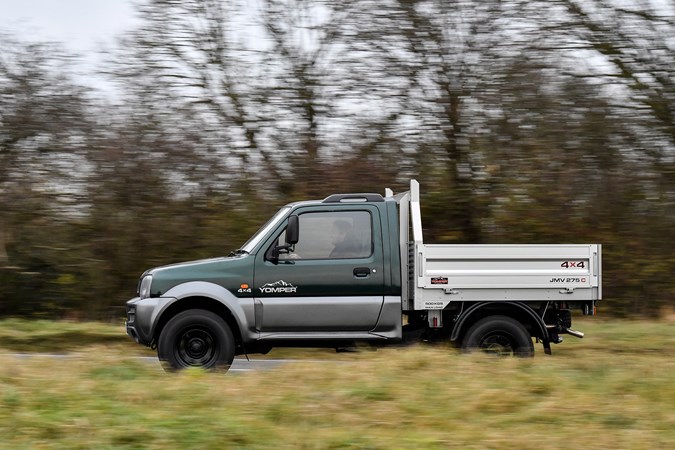
If you needed even more capability, you could fit any number of additional components yourself, or ask Yomper to do so during the conversion process, but in the form we have here the Yomper can cope with most anything the British countryside can throw at it. That’ll make it very useful as a farm truck.
The key advantage that the Yomper has over a UTV like a Polaris is that it’s actually capable of driving on road. Compared to those vehicles, it’s a limousine. However, it’s on-road that the limitations of the Suzuki Jimny platform become most apparent.
The standard Jimny would do 0-62mph in around 14.1 seconds when new, courtesy of its 83hp, 1.3-litre engine and five-speed manual gearbox. The Yomper we drove is not only larger, heavier, running on bigger tyres and with greater wind resistance, but was based on a 2005 vehicle with 70,000 miles on its engine.

Accelerating 0-40mph is sprightly enough for town driving but even at our most charitable we’d estimate well over 20 seconds to get to 60mph. Once you’re there, you’ll need to keep your foot welded to the firewall to cruise – and that’s in an unloaded vehicle.
When we put two large men in the cab and a large Christmas tree in the load bed, top speed dropped to around 55mph.
It’s not all bad news, though. Those who find a standard Jimny rather skittish and unstable will be pleased to know the additional length and upgraded suspension actually make the Yomper more reassuringly planted at speed.
What’s the cab like inside?
This is another area where the age of the vehicle rather shows up. The Jimny cab feels dated, even taking into account the age of the vehicle, though if you’re lucky enough to find a base vehicle thus equipped you can at least enjoy air-conditioning.
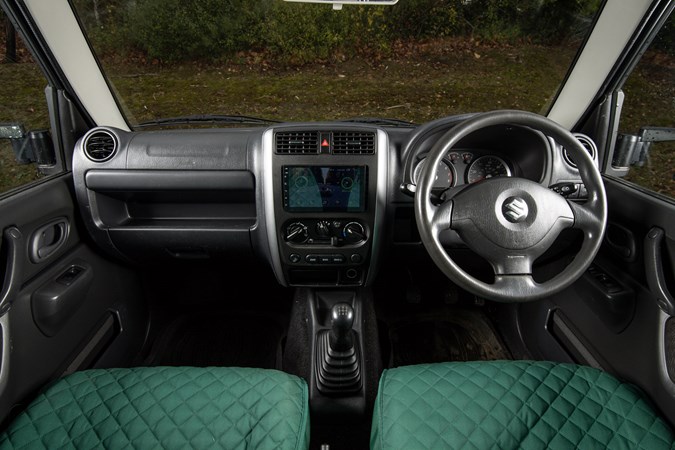
There’s enough room for tall drivers to get reasonably comfortable, though the cab’s rather narrow if you’re wide of frame.
And with its shockingly effective heater and comfortable quilted seat covers, it’s much better than a UTV for working in cold and horrible weather.
How much does a Yomper 4x4 cost?
Pricing is individual to each vehicle and reflects the cost of the conversion as well as the condition, mileage and original price tag of the base vehicle.
The JMV275 Commercial that we tested is currently for sale at £17,995 plus VAT.
That’s somewhat of a tough pill to swallow, especially when you consider that you’re paying that much for what is, underneath it all, a 15-year-old car with 70,000 miles on the clock.
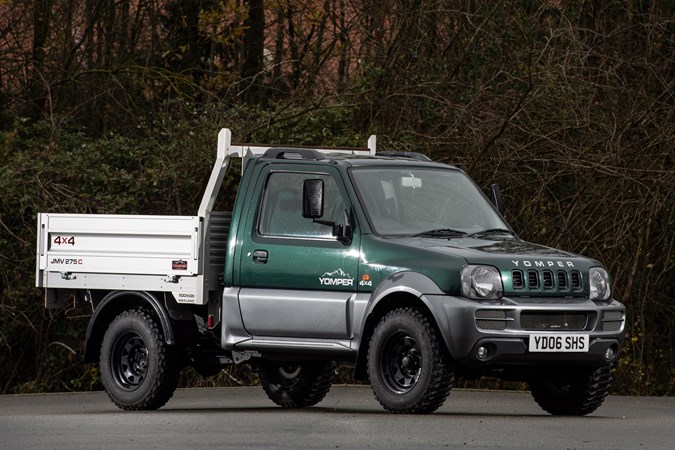
However, even standard Suzuki Jimnys retain their value incredibly well, especially with the volatile state of the used car market at the moment. And we’ll reiterate that the quality of the conversion is very good indeed, and holds up to that premium price tag.
Should you buy a Yomper?
If the Yomper fits your needs, then there isn’t really anything else like it. Other conversions of Suzuki Jimnys are available but we’re not sure they’re of such high quality, and none come with the extended wheelbase that makes the Yomper so useful.
Excellent off-road capability and, realistically, all the skill it needs for the occasional jaunt on tarmac makes the Yomper very fit-for-purpose as a farm truck, estate vehicle or greenlaning machine. It’s a little truck that can work like a big one.
Also read:
>> Our Suzuki Jimny LCV review
>> What is a commercial 4x4 – and which are best?
>> The best car-derived vans on sale in the UK
>> Parkers ranks the best pickup trucks
Just so you know, we may receive a commission or other compensation from the links on this website - read why you should trust us.


